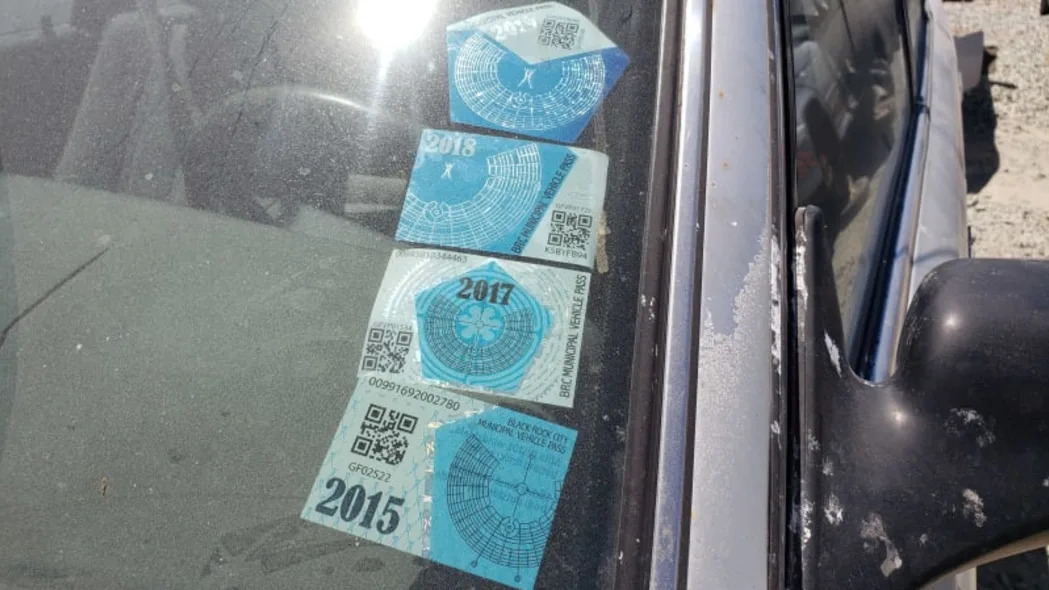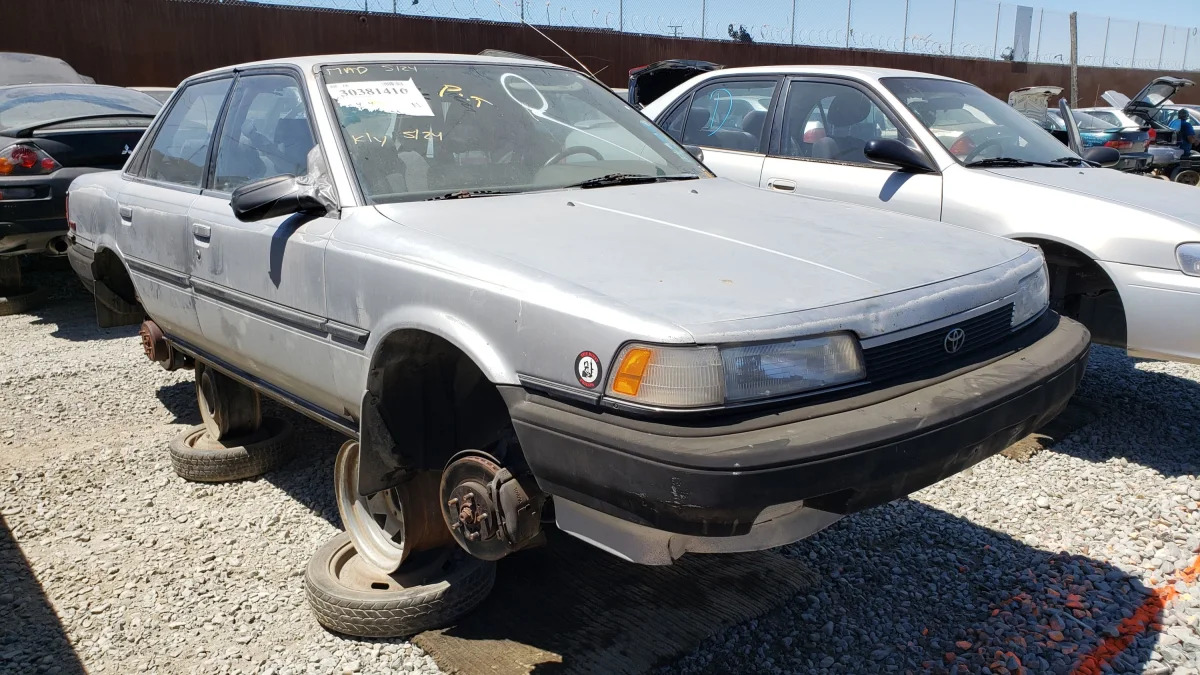Back in the 1980 model year, American Motors introduced us to the idea of a four-wheel-drive car that could be driven all the time with power going to all the wheels, no confusing military-truck-style hubs or levers to mess with, and then Audi began selling cars with the Quattro system the very next year. While Toyota spent much of the 1980s selling four-wheel-drive Tercel wagons here, we didn't have the chance to buy Toyotas with what we'd call true all-wheel-drive (using the term as understood today) until the introduction of the All-Trac system for the 1988 model year. 1988 Toyota shoppers could get All-Trac on the Corolla, the Celica… and the Camry. Corolla All-Trac wagons sold very well and I still find plenty of them in junkyards to this day, but very few 1988-1991 Camry shoppers opted for all-wheel-drive. Here's one of those seldom-seen Camry All-Trac sedans, found in a San Francisco Bay Area car graveyard last month.

The second-generation Camry was about as sensible as any vehicle Toyota has ever built, and this one came so close to 300,000 total miles during its 31 years on the road.

We can see that it spent some time in the hands of someone in the Navy, at least through 2014.

After that, it was driven to Burning Man for four straight years (the 2020 event was canceled due to Covid-19).

Many bands are represented by stickers on this car, including Melvin Makes Machineguns, The Business, Supersuckers, Thought Riot, and The Dirty Priests. Bernie Sanders also gets a shoutout, though the lack of a 2020 primary campaign sticker suggests that this car may have retired from the road before spring of that year.

You'd be glad to have All-Trac when driving from the Bay Area to the Nevada high desert in the winter, but it probably didn't make any difference when heading to Black Rock City in August.

With the automatic-equipped Camry All-Trac (in theory, you could get a Camry All-Trac with a five-speed manual transmission, though I've never seen one), the driver could unlock the center differential with this button.

All of these cars had the 103-horsepower, 2.0-liter four-cylinder engine when equipped with the All-Trac system. Sadly, you couldn't buy an All-Trac Camry wagon (however, you could get a 1990 Camry sedan with a 153-horse V6 engine and manual transmission, though only with front-wheel-drive). For the 1991 and 1992 model years, Toyota Previa shoppers could get an All-Trac version with five-speed, making this one of the coolest minivans ever built; unfortunately, the supercharged Previas came along after the five-speed All-Trac version got the axe here.

The presence of a key on a cable dangling from the steering column means that this car was likely a dealership trade-in or an insurance total that wouldn't sell at auction. It may have been a good runner until it got here, but selling a battered sedan with more than a quarter-million miles on the clock is tough.
Don't worry, be happy you've got a Camry!
Related video:










Sign in to post
Please sign in to leave a comment.
Continue